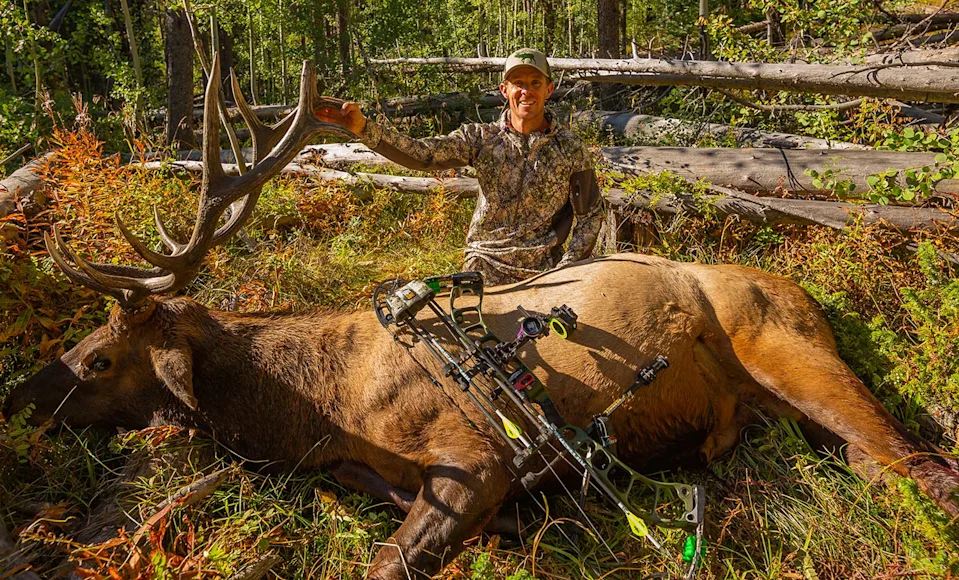_We may earn revenue from the products available on this page and participate in affiliate programs. Learn more ›
_
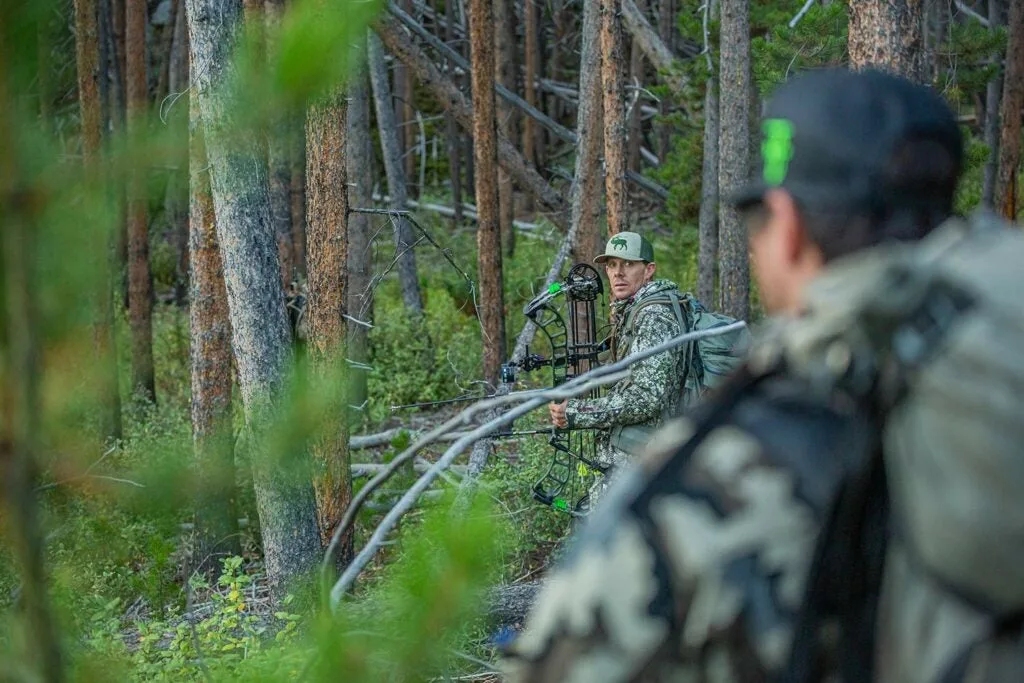
Few things rival the pure joy that comes from bowhunting elk on open-to-anyone dirt. Keep pushing forward, and always believe it’s going to happen. Adam Amick
Over-the-counter (OTC) elk units tend to get a bad rap. It doesn’t matter, either, if the particular unit boasts unlimited tags or those offered on a first-come basis. Most hunters will be quick to sneer at them. Of course, hunting pressure in OTC units is going to be higher than those found in coveted draw units. Elk encounters may be fewer, and made-by-elk vocalizations may be hard to come by. However, if the thought of going years (sometimes decades) in between guttural bugles and basins littered with golden aspens disgusts you, OTC units need to become your best friend. Successful OTC elk hunting, whether you’re toting a bow or rifle, comes down to having a system for success. The following advice applies to both crowds. If you put it to practice, a date with an OTC bull is likely in the coming weeks and months.
The good news: OTC units can produce incredible hunting for elk if you follow these guidelines. Forget the odds and the naysayers. If you’re willing to work hard and be relentless, good things will happen. Colorado boasts the world’s largest elk population (just north of 280,000 animals) and gives resident and nonresident bowhunters a total of 137 out of 184 units to chase their OTC elk dreams in—we are going to refer to it often.
Step 1
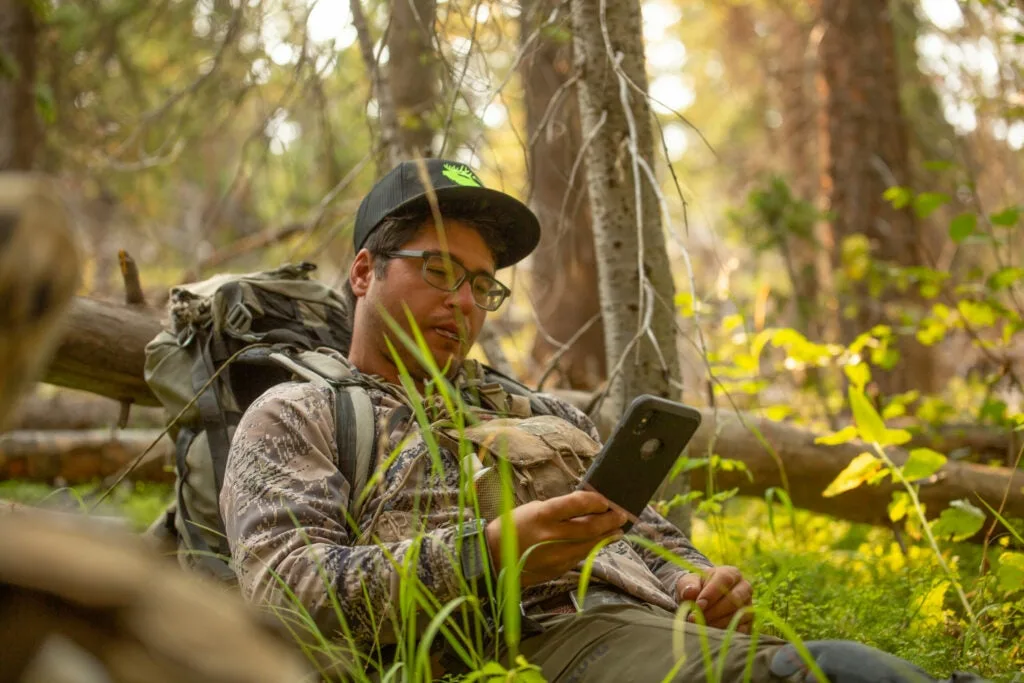
Taking the time to download maps offline and mark prospective elk hot spots will keep you in the game throughout the entirety of your hunt. Adam Amick
Locating OTC elk units, thanks to newly polished western game and fish websites, is a breeze. Idaho, for instance, provides OTC tags on a first-come basis in all but one of its elk management zones and all but three of its elk management units. Naturally, popular units go fast, so do your research and be ready to go when those units go on sale. Colorado, on the other hand, offers unlimited tags in its OTC units, and tags can be purchased starting in early August through the end of the season. Colorado’s OTC units are easily discovered by simply looking at the regulation’s brochure. These units are highlighted and clearly marked.
When looking for a prospective OTC elk unit, the first thing I like to do is check out hunter success. Yes, I realize these percentage rates are often skewed due to bowhunters who don’t hunt at all, hunt only a day or two, or never leave the comfort of their Chevy, however, I do believe they have a lot of value. If you can locate a hunt unit or better yet a trio or more that have connecting borders that boast success rates above 10 percent, they are worth a look. Most western states ask hunters to fill out surveys at the end of the season, and results are then posted to the state’s game and fish website. Take advantage. While you’re looking at success rates, it’s also a good idea to peek at recent population counts and bull-to-cow ratios. Again, most every western state will have this information on their website. I like to print out success rates, population, and bull-to-cow ratio sheets and use them to triangulate a likely hunt unit.
Don’t disregard isolated single units either, especially if they border draw units. I’ve had some great hunts pressing in close to a draw-unit area and hunting the border. The biggest reason I like connecting units is if I’m struggling to find elk, I don’t like to wait around. Elk are big travelers. If I spend a full day hunting an area and don’t see a single elk, hear a bugle or at the very least see some greasy sign, I bounce. If you do opt to put all of your OTC eggs into a single unit, be sure that unit has plenty of National Forest and BLM access, which takes us to Step 2.
Step 2
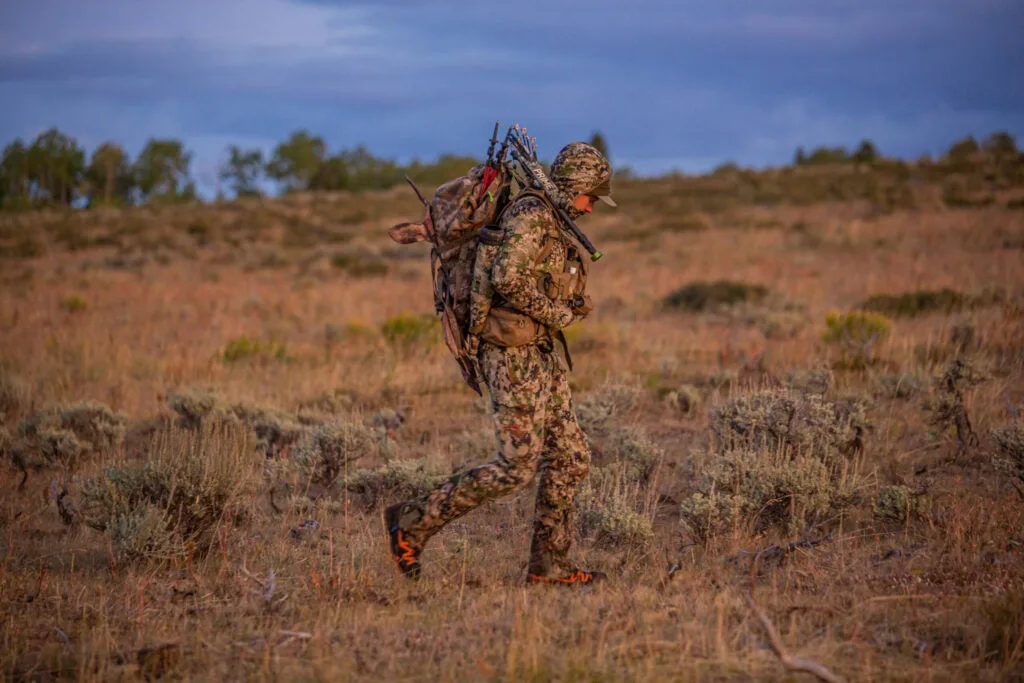
Don’t be afraid to park off a main road and dive in. If the area looks good, and no other trucks are parked in the general location, take the chance. Adam Amick
Now that you have a few units in mind, it’s time to pull those units up on your onX Hunt App. If you don’t have onX, get it. Not only does this digital mapping system allow you to mark likely hunt locales, but it also shows public/private land boundaries and is loaded with an abundance of other helpful features like hunt unit boundaries and the like.
What are you looking for? Access for starters. I like to locate off-the-beaten-path areas that require a mile or more jaunt to get into them and are restricted to travel on foot, horseback, or pedal power. If you can locate a trail snaking through vast acres of public land with no other road access available for miles around, take note of it. In addition to locating off-the-beaten-path locations, you’ll also want to mark between eight and 10 (the more, the better) right-off-the-road areas. No, I’m not crazy. The go-deep drum has been beaten hard, which has increased competition in the backcountry and left piles of easy-access spots abandoned. Locate areas right off of a main road that dive into a hellish bottom or require a long, vertical walk. Both will discourage the masses. A pair of my hunting partners have utilized this off-the-road tactic over the past two seasons in Colorado. The results have been four public-land bulls over a total of 10 hunt days, and my amigos slept in the comfort of their camper each night.
It’s also a good idea, especially once you’ve decided on a hunt unit, to get a good paper topo map. I prefer those from HuntData
due to the fact that they are printed on Dura-Map fabric, which stands up against weather and in-and-out-of-pack abuse.
Step 3
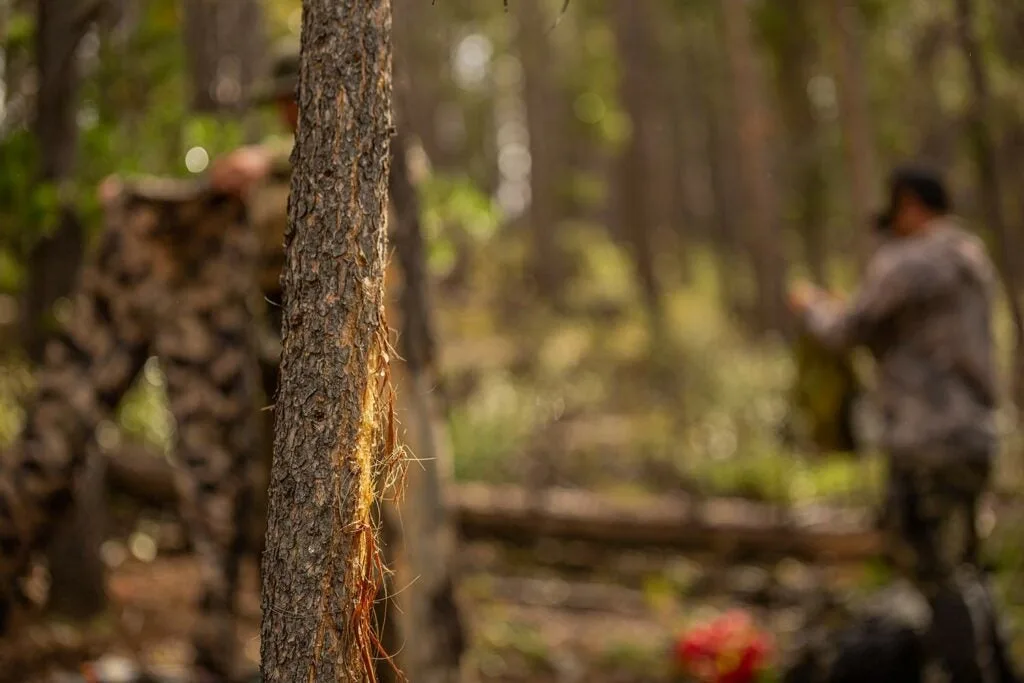
Pressured elk love to move into deep, dark drainages. When checking these areas, keep a sharp eye peeled for fresh rubs and other sign. Adam Amick
With your hunt area pulled up on onX maps and your paper map in hand, it’s time to look for likely elk haunts. If the plan is to pack in deep and seek secluded areas, remember that elk need water, cover, and food. The more rugged the country, the better. Any areas with deep drainages lined by steep slopes should be noted. These drainages offer thick bedding cover, and streams often trickle down their middles. Other areas of interest should be steep country that levels out on large benches (long, flat spots amidst steep country) before dropping off once again. Elk love to rut on benches. Other notable spots include small, secluded meadows in the middle of a sea of deep, dark timber. Elk will feed in these meadows early and late, and most will contain at least one well-used wallow.
If your destination is Colorado, don’t overlook units with wilderness areas inside their boundaries. In Colorado, both residents and non-residents can access wilderness areas without a guide, and these locations are usually the best recipe for getting away from people and experiencing a true backcountry hunt. Travel into wilderness areas is limited to foot and horseback only. Simplify your OTC unit/wilderness area search by visiting coloradowilderness.com
.
Read Next: Elk Hunting Archery Tactics for Post-Rut Bulls
What about north-facing slopes? Sure, north-facing slopes are good for bedding, but over the years, especially during the rut, I don’t worry at all about which direction a slope faces. I go where the elk are.
If you like the dive-off-the-road plan or want to use it as a backup if your go-deep idea goes to crap, again, look for areas that drop quickly in elevation. Elk will hold up in deep dark holes. Another option, and one my hunting partners and I use a lot, is the straight-up approach. If you can find some off-the-road vert that leads to a good bench, mark it. The more spots you have marked, the more you can bounce in and out of. Another great tactic is to look at easy-access areas that will draw the masses, and then located the nastiest, steepest area in close proximity to these areas. These locations will often fill up with pressured elk. Remember, it takes only one bull to cooperate.
Step 4
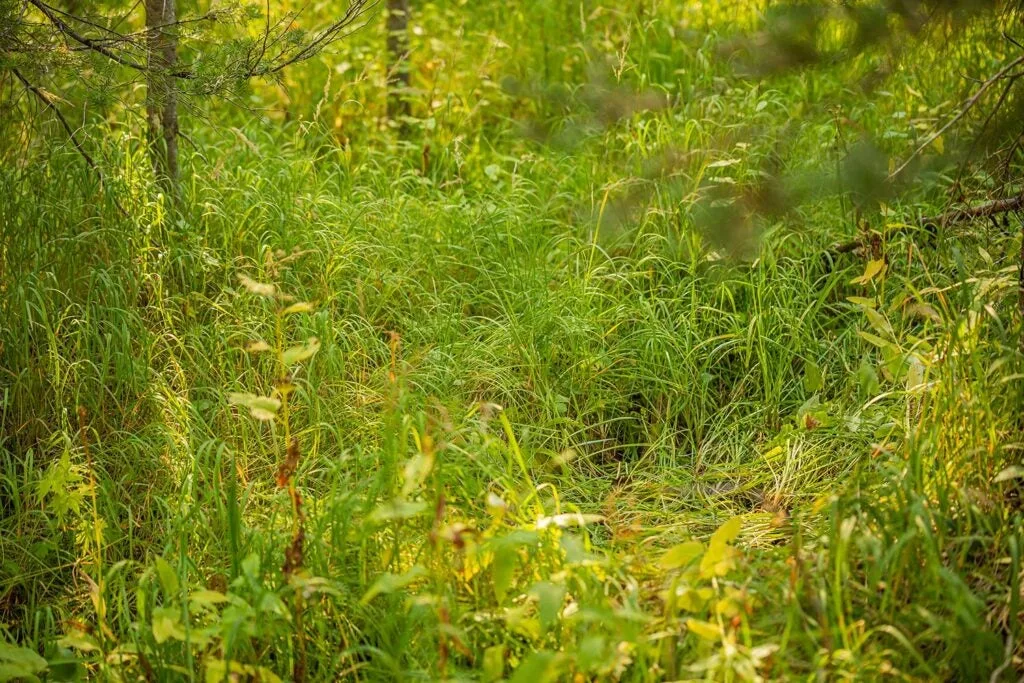
Keep a keen eye, especially when learning a unit, for areas elk like to be. When you find a small, grassy meadow surrounded by thick timber full of elk beds, mark it on the map. Adam Amick
I know it’s been written about more times than Gene Simmons has flicked his tongue at Kiss concert, but it’s really a must do. Call the local state game and fish office nearest your hunt locale and get the number for the area biologist. I love these folks. Why? Simple, they spend most all of their time in the field compiling data, and most everyone of them I’ve ever talked to is dying to share it with a source other than a spreadsheet.
The trick is to honor their time. If you’re lucky enough to get them on the phone, have a list of pre-prepared questions written down. They will appreciate this and will be more apt to provide helpful information. Chances are, however, you won’t get them on the phone. No biggie. Leave a message and they will call you back. The problem is they will call you back while you’re checking out of the grocery store or at some other inopportune time—mark my words. For this reason, I carry my list of questions in my wallet. This way I have my questions on-hand at all times. Here is a quick list to get you started. Feel free to add your own.
These are the areas I’m looking at. Can you recommend any others where I may be able to get away from people and find elk?
Have there been any winter mortality issues or any other factors in the area that have led to a recent population decline?
Are there any special camping or hunting rules in this location that I need to be aware of?
How have calf survival rates been over the past few years?
Is there anything you know of that should discourage me from hunting this area?
From a biologist’s point of view, what about any encouraging factors?
Step 5
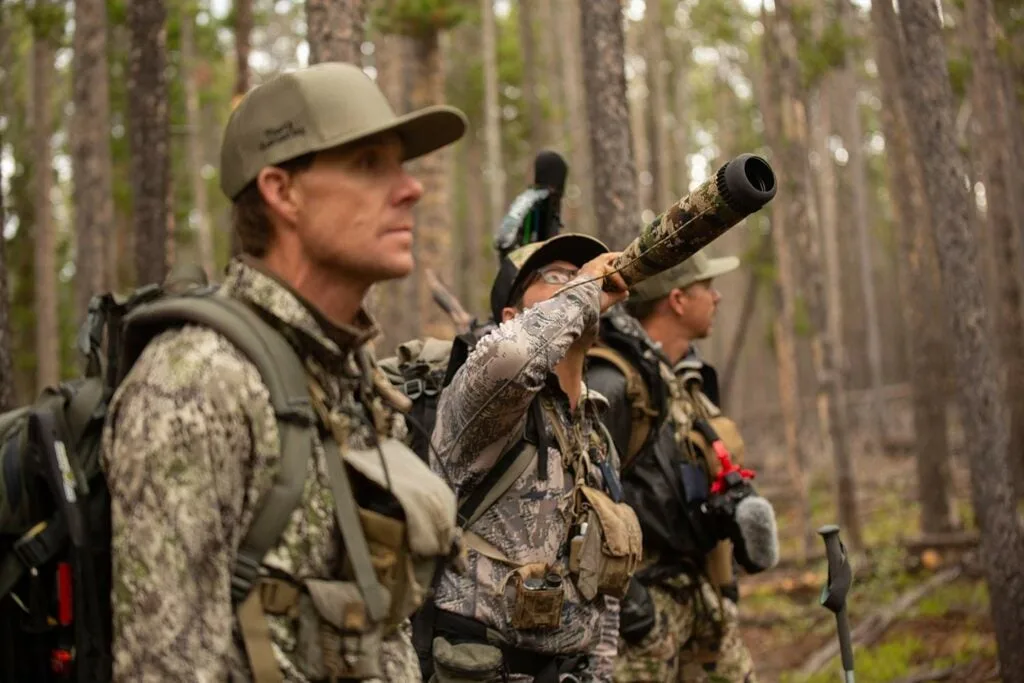
Get out there and get after it! Don’t let fear or the vastness of the western landscape hold you back. Go out and make contact with a bugling bull. Adam Amick
Sadly, it’s this step that most don’t complete—and those that do won’t follow the advice to come. You’ve done the research and are all ready to go, so, please, go! Many would-be elk hunters, after they’ve done all the leg work, simply don’t go. They talk themselves out of the idea and listen to reports from naysayers who’ve had “bad” OTC experiences. Remember, most of these experiences were the sole fault of the participant. I had a guy tell me last year at a sporting goods store that he hadn’t heard a bugle in 10 days of hunting. He was hunting the same general area my hunting partners and I were, and we’d heard multiple bugles each day and killed a pair of bulls. The difference: He expected the unit to be like an elk hunting video. He was driving access roads and trying to solicit bugles from his truck. This leads us into the second half of Step 5.
It’s essential that you go into your hunt with realistic expectations. Unless you end up on a bench with a handful of hot cows and a number of satellite bulls circling the girls with herd bull trying to protect his harem, it’s likely you won’t hear the type of bugling you’ll see on outdoor television. Remember, you’re hunting pressured land and elk that have likely been called to. Lots of bulls come in silent to bull and cow talk.
**Read Next: Elk Hunting Experts on Cutting Edge Tips and Tactics
**
Another important tip (especially if this is your maiden voyage into the elk woods) is to have realistic expectations when it comes to the size of your harvest. I live in Colorado, and unless I have a draw tag in my pocket, I shoot the first legal bull I see. This takes the pressure off and typically allows me to fill my freezer with meat. Most Colorado OTC units offer either-sex licenses, and there have been many seasons where I slammed a broadhead-tipped arrow through a tasty cow.
Go into the hunt with the mindset that you will shoot the first legal elk you’ll see, and it will be that much more enjoyable. I also recommend, especially if this is your first trip into an area, to simply focus your hunt around learning your unit. Learn and take note of your access points. Keep notes about elk encounters and the like. The goal is just to get into elk. If you find a place void of people and teeming with elk, you’ve found a gem you can go back to on those years you don’t have a draw tag in your wallet.
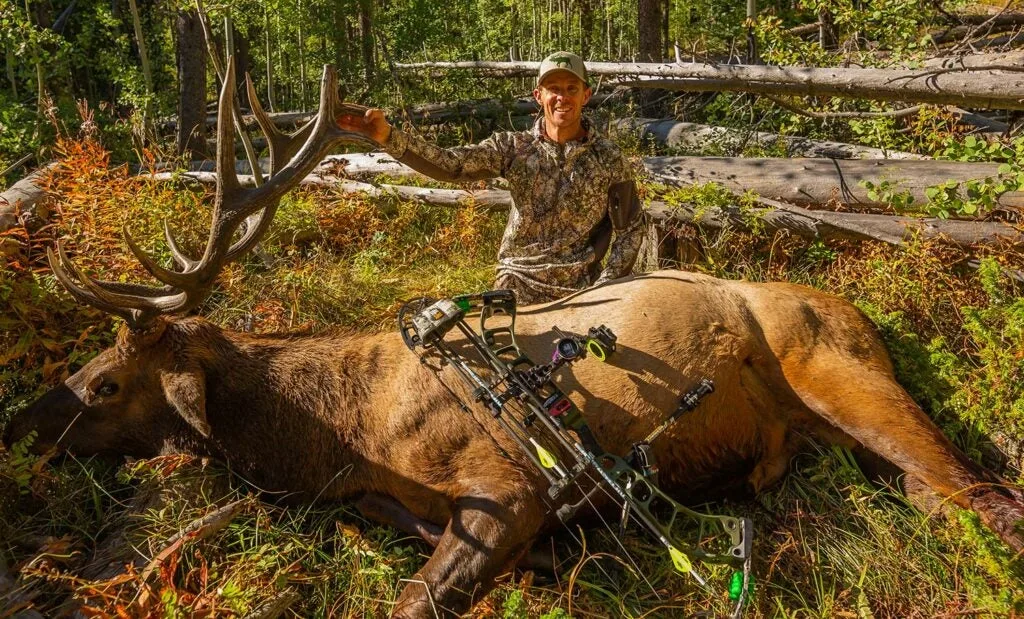
Though this is a nice Colorado OTC six-point, the author recommends harvesting the first legal bull that wanders bowhunting close. Adam Amick
There’s More
With seasons open across the West, Colorado may be your best option. When it comes to a few units to help jumpstart your search, look to those in the states Northwest and Southwest. A few with connecting borders include 11, 21, and 22 as well as 80, 81, and 78.
There you have it. All the info you need to go OTC. Get after it!

